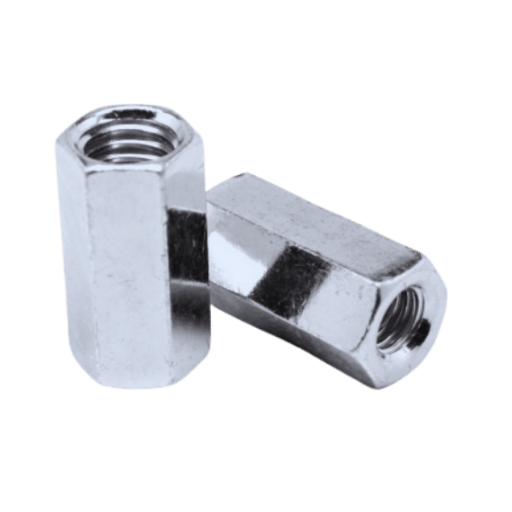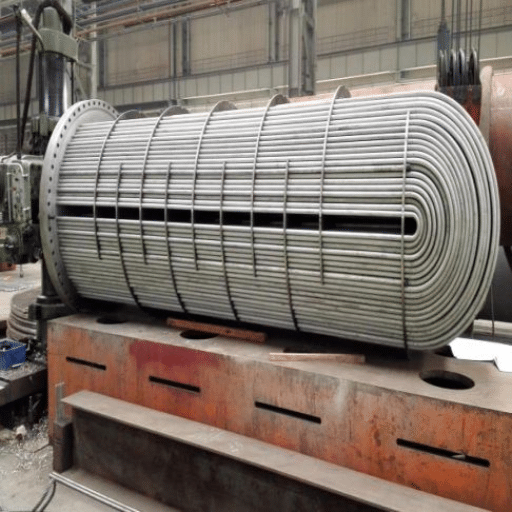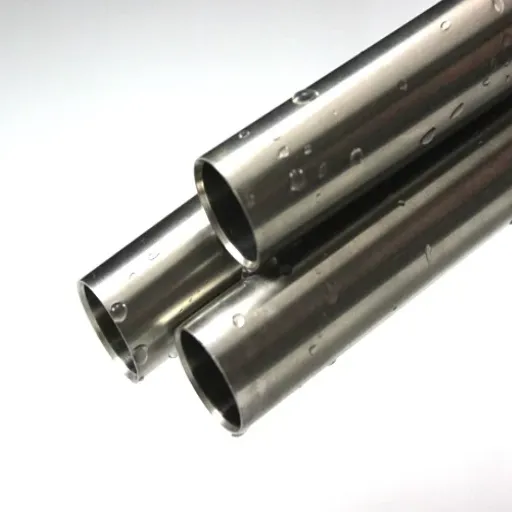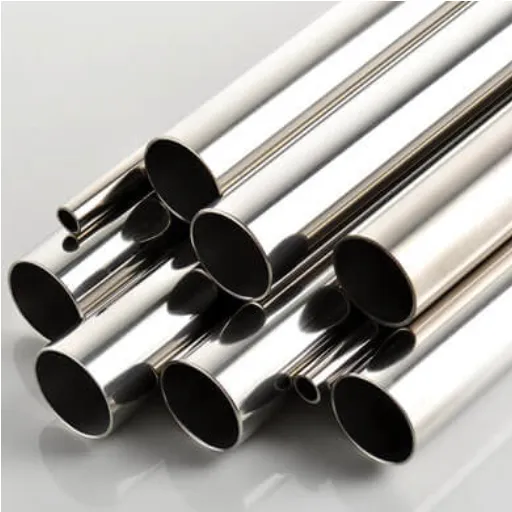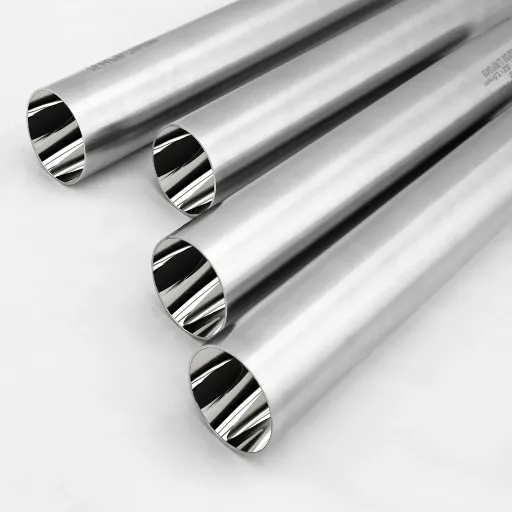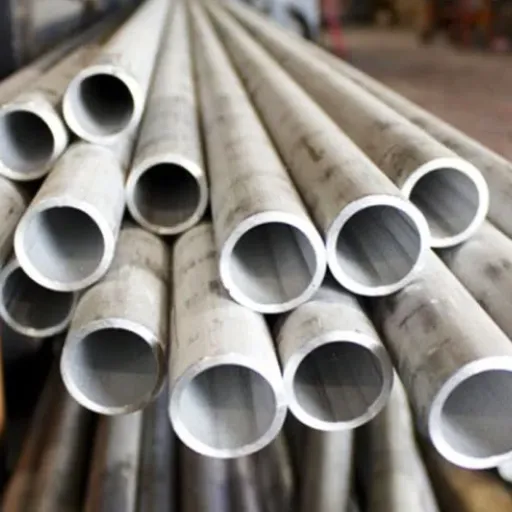Choosing the right stainless steel for your application can be a complex decision, as not all stainless steels are created equal. Among the most commonly used types, 18-8 and 316 stainless steels stand out for their durability, corrosion resistance, and versatility. But how do you determine which one is best suited for your specific needs? Whether you’re manufacturing industrial equipment, designing medical tools, or constructing architectural structures, understanding the key differences between these two alloys is essential. This article will guide you through a detailed comparison of 18-8 and 316 stainless steels, helping you make an informed and confident choice for your projects.
Understanding 18-8 Stainless Steel
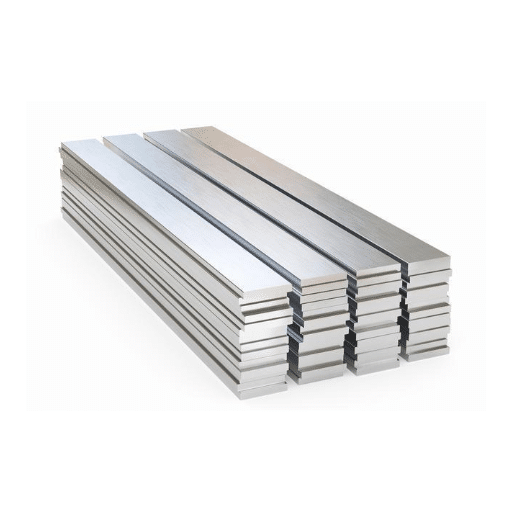
Composition of 18-8 Stainless Steel
18-8 stainless steel belongs to a group of stainless steels that are most common and well-known for strength and corrosion resistance. The name “18-8” means that the alloy contains 18% chromium and about 8% nickel, the two being primarily responsible for corrosion resistance and mechanical strength. Chromium imparts corrosion resistance by setting up a thin passive oxide film over the surface of the articles, while nickel imparts strength to the material and weldability.
This alloy comes under the austenitic stainless steel series 300, most commonly the 304 grade. There may be trace amounts of manganese, silicon, and carbon to aid workability and performance in various applications. This composition makes annealed 18-8 stainless steel nonmagnetic, although cold working may impart some degree of magnetism.
Such properties of 18-8 stainless steel enable it to serve a variety of purposes, such as kitchen utensils, fasteners, and chemical processing equipment. It can resist oxidation in various environments and thus shall perform well over time. Thus, it is slightly less resistant to certain corrosive agents from a higher-grade alloy, such as 316 stainless steel.
Properties of 18-8 Stainless Steel
Due to the perfect balance among corrosion resistance, formability, and mechanical performance, 18-8 stainless steel is used widely in numerous trades. With about 18% chromium and 8% nickel, it belongs to the austenitic stainless steel series, known to be nonmagnetic in the annealed state and with extraordinary oxidation resistance. This composition further makes sure that it will remain intact structurally in industrial applications at different temperatures, or even at household uses.
So, the most important and predominant feature of the 18-8 stainless steel is corrosion resistance. In case of reacting with chromium present in the alloying material, a thin film of passive oxide layer is formed on the surface, which then subjected to stop rusting and minimizes moisture or atmospheric actions by blocking them. Hence, 18-8 stainless steel offers resistance against a few corrosive agents under general circumstances. Again, 18-8 grades may lose corrosion resistance in highly acidic/NaCl-laden atmospheres, as a sea atmosphere, where grade 316 earns respect.
Secondly, another feature of stainless steel 18-8 is the capacity to be fabricated more easily. It can be welded easily and handled through machining, bending, and drawing without affecting the strength of the material. And with the wear resistance characteristics and very fine finish, the material is considered best design-wise in uses ranging from sterilisation of utensils to architectural applications. It may not be the strongest stainless steel available, but because it is cost-effective and offers reasonably good service, it forms a good choice for many different uses.
Applications of 18-8 Stainless Steel
18-8 stainless steel is a type of steel with very high corrosion resistance; it is thus extremely adaptable and finds applications across industries. The descriptions below explain five of the most important applications:
- The Food and Beverage Industry: 18-8 stainless steel is widely used in the manufacture of kitchen utensils, cutlery, and cookware, as well as in food processing machinery. It being non-reactive, in essence, prevents any flavor or contamination in the food. It has the property of being easy to clean, making it perfect for food-grade areas; it is bacteriostatic. Research has shown that 18-8 stainless steel resists attack from acids encountered in food production processes.
- Medical and Pharmaceutical Equipment: Its biocompatibility makes it always preferable for surgical instruments, implants, and hospital equipment, along with very easy sterilization; it is corrosion-resistant and guarantees longevity even after repeated exposure to autoclaving cycles, chemical disinfectants, and body fluids corrosion is resistance. These products made for this application usually meet ISO standards for safety and precision.
- Construction and Architecture: 18-8 stainless steel finds wide use for structures, cladding, handrails, and decorative trims, combining the attractive appeal with durability. It offers long service life with the least maintenance costs because it goes through outdoor environments without rusting, weathering under harsh weather conditions.
- Automotive and Transportation: It is common to have a place for this material in exhaust systems, fuel tanks, and structural chassis elements. It offers thermal stability and resists fuel and chemical exposure. For example, an exhaust system made of 18-8 stainless steel resists corrosion from combustion by-products at high temperatures and thus prolongs the lifespan of the vehicle.
- Chemical Processing Industry: Because of its resistance to many acids, alkalis, and chloride-induced stress corrosion cracking, it is used in chemical processing plants for tanks, pipes, and heat exchangers. This ensures that aggressive substances are handled safely without the material failing under high pressure and high temperature.
Extremely good high performances in these very many applications have really contributed to 18-8 stainless steel being acknowledged as one of the most useful of all the alloys in a very wide range of industrial and commercial applications.
Exploring 316 Stainless Steel
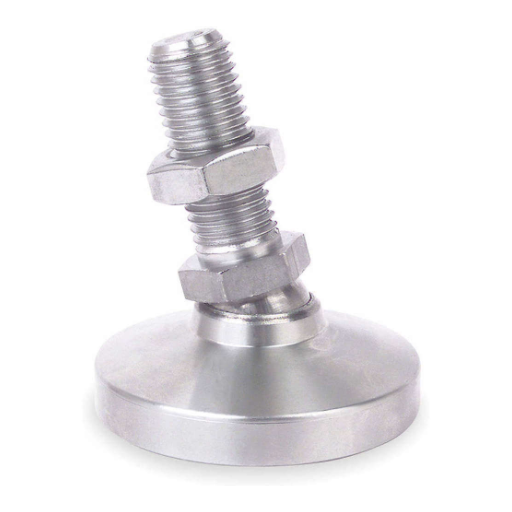
Composition of 316 Stainless Steel
Being an austenitic chromium-nickel alloy, 316 stainless steel contains molybdenum to confer better corrosion resistance in chloride environments compared to general 304 stainless. The nominal chemical composition would have 16-18% chromium, 10-14% nickel, and 2-3% molybdenum. Other elements such as manganese, silicon, and carbon may be found in smaller concentrations, with iron making up the bulk remainder. The inclusion of molybdenum is a key factor because it helps with resisting pitting corrosion in addition to crevice corrosion.
In carbon steel, carbon content is limited to 0.08% by weight to maintain high corrosion resistance and to prevent sensitizing during the welding procedure. For applications requiring the utmost resistance to intergranular corrosion, the low-carbon version, known as 316L, is preferred with a maximum carbon content of 0.03%. Small amounts of nitrogen might also be added to certain grades of 316 stainless steel to further enhance strength and corrosion resistance.
The choice of chemistry equips the subject steel with outstanding corrosion resistance, together with excellent mechanical properties, such as tensile strength and durability. Being versatile due to this element combination, 316 stainless steel finds application in heavily industrialized areas such as chemical processing, medical instrumentation, marine, and high-temperature process applications. Thanks to the exact chemical composition, which never varies, the alloy never fails even under severe conditions, consequently ensuring reliability and longevity in critical applications.
Properties of 316 Stainless Steel
316 stainless steel is known for strong physical and chemical properties that, when tested, assure it to be a viable material in challenging environments. Its superior corrosion resistance is attributed to the high molybdenum content, which improves its serviceability in chloride environments like marine or industrial environments. Its tensile strength ranges generally from about 515 MPa to 690 MPa, but under yield strength, it remains near 205 MPa, which permits it to withstand mechanical stresses.
Its thermal and oxidation resistance are, in fact, of utmost significance. 316 stainless steel is capable of resisting temperatures of about 870°C (1598°F) on an intermittent basis and 925°C (1697°F) on a continuous service basis. Further, nickel and chromium contained in the matrix greatly contribute to oxidation resistance, also aiding in the maintenance of its structural integrity under abnormal testing conditions.
Moreover, these annealed stainless steel properties entail nonmagnetism and great formability, thus allowing it to be used in applications where precision and reliability matter. This alloy is a pleasure to weld, allowing complex fabrications without imparting any stress to its structure. In cases where such equipment requires utmost hygienic conditions, like in sanitary medical or food equipment, 316 stainless steel with its mirror-smooth surface is a joy to maintain and resists contamination.
These numerous existing properties combined with highly refined standards of alloying allow 316 stainless steel to emerge as the industry standard so far, blending strength, resilience, and resistance to stringent operating requirements.
Applications of 316 Stainless Steel
316 stainless steel is described as a material best known for corrosion resistance, strength, and durability, when it comes to major demanding applications. Here is a detailed list of five chief applications where 316 stainless steel dominates:
- Marine Environments: It had its rank attributed to its resistance to corrosion due to the salt water in the marine environment. Common applications of 316 stainless steel are in boat fittings, propeller shafts, and underwater pipelines, where chloride exposure is a notable factor to consider. It has been noted that the molybdenum in its composition gives it enhanced performance over other stainless steel grades.
- Chemical and Petrochemical Processing: 316 stainless steel is of great value to the chemical processing plants and petrochemical industries because of its extreme resistance to attack by chemicals, some being acids and others alkalis. In the construction of tanks for storage, heat exchangers, and reaction vessels, 316 stainless steel is commonly used to guarantee a long service life and a safe working environment in highly corrosive surroundings.
- Medical and Pharmaceutical Equipment: Materials used in media for medicine and pharmaceutics must be sterilizable and contamination-proof. 316 stainless steels satisfy these criteria perfectly and is utilized in surgical instruments, biomedical implants, and equipment for pharmaceutical processing. The biocompatibility of this steel endows yet further benefits for this application.
- Food and Beverage Industry: The smooth surface finish and anti-corrosive properties of 316 stainless steel allow it to be used in equipment for food processing and beverage manufacturing, including mixing tanks, piping systems, and heat exchangers. Approved by FDA and European standards, the steel presents a hygienic environment resistant to food acids and cleaning chemicals.
- Industrial and Architectural Applications: 316 stainless steel has the mechanical strength to suit the industrial equipment and structural applications bearing corrosive environments; hence, conveyor belts, pressure vessels, and architectural valances are examples where 316 stainless steel is applied on-site in the sun-shaded areas, hazardously exposed to harsh weather conditions and corrosive salts.
These applications exemplify 316 stainless steel’s versatility and dependability in some of the most daunting working environments. The widespread application of this steel in several industrial sectors testifies to the fact that it combines mechanical strength, corrosion resistance, and hygiene-friendly surfaces as no other medium does.
Comparing 18-8 and 316 Stainless Steel

Corrosion Resistance: 18-8 vs 316
When we talk about corrosion resistance between 18-8 stainless steel and 316 stainless steel, the composition of these two stainless steels should be taken into account. Eighteen-8 refers to austenitic stainless steel grades containing approximately 18% chromium and 8% nickel, like the famous 304 stainless steel. The presence of chromium and nickel takes care of corrosion resistance in a number of environments. However, due to the addition of only 2-3% molybdenum, 316 stainless steel may enjoy certain pitting and crevice corrosion advantages under more aggressive conditions. Molybdenum provides outstanding protection against pitting and crevice corrosion, especially in chloride environments typical of coastal atmospheres or processes involving salts.
Thus, 18-8 stainless steel is very much acceptable under normal atmospheric conditions and in typical industrial environments, but in marine or highly saline environments, signs of localized corrosion may develop. Whereas for more hostile, chloride-rich environments, 316 stainless steel will withstand high chloride concentrations without rapid degradation. Research also suggests that 316 stainless steel has a much higher critical pitting temperature (CPT) compared with 18-8 grades, thereby supporting the superior ability of 316 to prevent localized corrosion initiation.
For such a reason, 316 stainless steel finds application in places such as desalination plants, chemical processing equipment, and marine-grade hardware, where exposure to corrosive agents for long periods is a common occurrence. On the other hand, 18-8 stainless steel is more commonly specified for less demanding applications where cost considerations play a vital role and the likelihood of localized attack is quite low.
Strength Differences: 18-8 vs 316
Mechanical strength properties are subject to several variables attributable to the differences in chemical composition between 18-8 stainless steel and 316 stainless steel. Both materials have an exceedingly high tensile strength and are robust to the utmost degree; however, 316 stainless steel usually supersedes 18-8 stainless steel regarding overall mechanical properties under extreme conditions. The tensile strength of 18-8 stainless steel is, in most cases, approximately 515 MPa (megapascals), while its yield strength is approximately 205 MPa, and is thus quite suitable for applications in which mechanical stresses are minor.
316, on the other hand, stands a little higher in tensile strength, usually varying within 515-690 MPa, with the yield strength standing slightly higher or at par, depending on the nature of the alloy, as well as the manufacturing process employed. This strength is enriched by the greater toughness of 316 in ambient and cryogenic temperature conditions. Another reason cited for selecting a 316 is its molybdenum content, which gives it resistance in environments subjected to extremely heavy loads coupled with corrosion.
The choice between these two grades should thus depend on the mechanical needs of the particular application, in view of the costing implications, and surface environment that may bear on some criteria affecting operational requirements.
Cost Considerations: 18-8 vs 316
When the metals are considered for application, cost implications include factors to consider when weighing the cost difference between 18-8 and 316 stainless steel. Being a less expensive variety, the nickel and molybdenum content gives 18-8 stainless steel a premium price due to raw materials and manufacturing costs. It is commonly used in ordinary applications where exposure to extreme situations is kept at a minimum and is thus preferred when cost is of the utmost importance.
316 stainless steel sees more alloying elements, resulting in higher raw material and production prices. The price premium is, however, supplemented by the value that comes with these properties, mainly its corrosion resistance in somewhat aggressive environments, particularly those containing chlorides or industrial chemicals. 316 stainless steel becomes justified in marine, chemical processing, or high-saline conditions by spending extra upfront costs for the sake of extended maintenance and life, and these prove to be less expensive over the lifespan of the application.
From a practical point of view, project-specific variables such as required longevity, exposure to aggressive environments, and mechanical requirements should dictate material selection. While less expensive to buy initially, 18-8 becomes the costlier solution for applications involving long-term durability under adverse conditions, where 316 becomes a cost-effective investment.
304 Stainless Steel: A Brief Overview
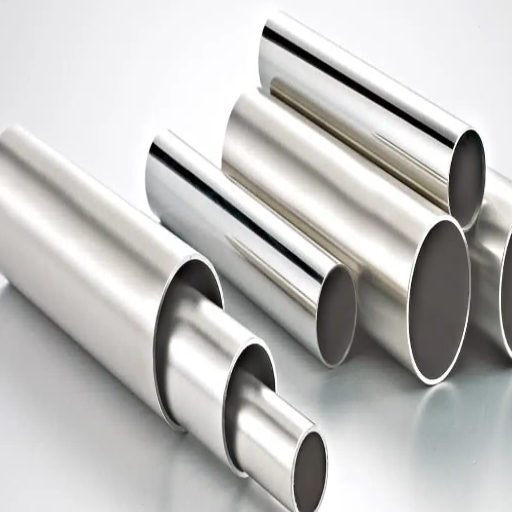
Comparison of 304 vs 316 Stainless Steel
304 is an economical stainless steel type with drawing and forming versatility and wide applications. 316 stainless steel contains molybdenum, which offers greater resistance to corrosion in harsh environments, more so than Type 304, and hence is used in marine and chemical applications.
|
Aspect |
304 Stainless Steel |
316 Stainless Steel |
|---|---|---|
|
Resistance |
Good |
Superior |
|
Expense |
Lower |
Higher |
|
Elements |
18% Cr, 8% Ni |
16% Cr, 10% Ni, 2% Mo |
|
Tensile |
Moderate |
High |
|
Elasticity |
High |
Moderate |
|
Thermal |
Up to 870°C |
Up to 927°C |
|
Usage |
Kitchen, Automotive |
Marine, Medical |
|
Longevity |
Standard |
Enhanced |
304 and 316 Stainless Steel Properties
Significant property variations existing in Stainless Steel 304 and 316 make their selection dependent on the specific application: pressure on one encyclopedic. Type 304 stainless steel is very versatile and is the most widely used grade owing to a balanced combination of properties, such as fair corrosion resistance, good tensile strength, and economic value. Its chemical structure of 18% chromium and 8% nickel imparts fair performance in less demanding corrosive environments. It finds applications in kitchenware, transportation equipment, and general manufacturing.
Type 316 stainless steel, conversely, is considered under corrosion-resistant stainless steel grades for harsh and corrosive environments. Because of the 2-percent molybdenum-molybdenum-containing content, this grade has improved resistance to chloride-induced pitting and crevice corrosion. The advantage that combining these stainless steels are resistant to corrosion, have a substantially higher tensile strength, and their life span comparatively longer life span, justifying their higher price. Finally, Type 316 is used mainly in marine environments, pharmaceutical processes, and medical device manufacture because of its very high performance and very high resistance to integrity maintenance under extreme thermal exposure up to 927°C.
Cost is, therefore, an important factor to be weighed against the environmental exposure and durability requirements when making the Stainless Steel 304 versus 316 selection. Furthermore, the latest developments in alloy technology and manufacturing methods could help with the engineering and industrial problems.
When to Choose 304 vs 316
Before 304 and 316 stainless steel, the environment and the actual operational requirements of the application must be considered. Type 304 stainless steel is generally sufficient in most indoor or moderate environmental conditions, as it stands with excellent corrosion resistance, high tensile strength, and a very affordable price. It is widely used in food processing, kitchen equipment, and general-use construction, where exposure to harsh chemicals or saline environments is not an issue.
In weighing these, 316 stainless steel is a stronger defense against corrosion and pitting in chloride-rich or marine environments; hence, for harsher conditions, it is chosen more often. Its inclusion of molybdenum ensures it will withstand chemical processing, pharmaceutical equipment, and extreme environmental conditions. Furthermore, 316 is superior for medical implants and surgical instruments for biocompatibility and the ability to tolerate repeated sterilization.
In the end, it is all about the performance expected, merged with a certain limitation of funding, and how harsh the environmental exposure is. A 304 will keep within the budget for even standard application exposures, but I believe in those cases where durability and sturdiness factor in, 316 stainless steel shows value.
Selecting the Right Stainless Steel for Your Project
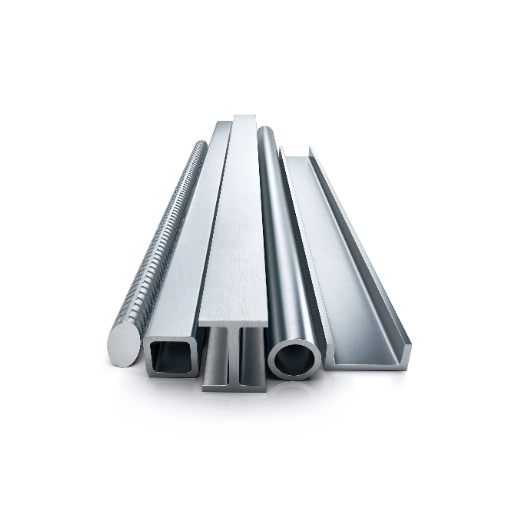
Choosing Between 18-8, 304, and 316
While choosing between 18-8, 304, and 316 stainless steel, the application requirements, environmental conditions, and budgetary constraints should all be determined. The term “18-8” encompasses a family of stainless steels with chromium and nickel percentages of 18 and 8, respectively. This general grade provides good corrosion resistance while seeing extensive use in common and industrial environments. However, in extremely corrosive or saltwater conditions, their performance lessens.
Maybe the most popular austenitic grade, 304 stainless steel, is the eyes and ears of 18-8, carrying with it almost every property but with a slight emphasis on weldability and formability. It offers reliable corrosion resistance in several moderately aggressive environments, such as food processing and chemical storage, through to construction. However, these materials would not withstand prolonged exposure to saline, acidic, or chlorinated environments, as they may undergo pitting corrosion as well as stress corrosion cracking.
Use for much harsher conditions can be given to 316 stainless steel, where the presence of 2-3% molybdenum in the composition enables resistance against chlorides, acids, and marine atmospheres, hence, making it the instrument of choice for marine hardware, pharmaceutical equipment, and high-performance medical devices. In general, 316 is much costlier, but one would make the case that its durability makes for less maintenance and replacement cost in the long run, especially when faced with harsh environments.
Materials selection can hence be better influenced through understanding which chemical composites and performance characteristics suit the situation; environmental and mechanical aspects form part of this.
Best Practices for Material Selection
- Define Environmental Conditions: Certainly, the first step is to thoroughly assess the environmental conditions in which the material will perform. For example, one must consider extreme temperature levels, moisture or humidity, the presence of corrosive agents, and mechanical stresses. Stainless steels such as 316 are employed for their ability to resist pitting and crevice corrosion that arises from salty and acidic environments.
- Evaluate Mechanical Requirements: The mechanical characteristics of the material, such as tensile strength, hardness, and ductility, must fit into the technical requirements demanded by the project. High-strength-to-weight ratio applications, for example, could benefit from more advanced alloys like titanium and high-strength aluminum, whereas applications that require deformation ability could consider low-carbon steels.
- Analyze Regulatory Compliance and Certifications: Some industries, for instance, aerospace, medical, and food processing, require materials to be subjected to certain standards and certifications. FDA-approved material validation is compulsory for medical devices, while ASME compliance is important for pressure vessels. Thus, verification ensures compatibility and compliance of these materials with those standards.
- Conduct Lifecycle Cost Analysis: First of all, think about the ownership cost, not only the initial fee. For instance, stainless steel 316 may have a greater initial cost; however, its corrosion resistance may enhance maintenance and replacement costs less in the long run, offering better value in a harsh environment.
- Keep Abreast with New Advanced Materials: Material science is progressing rapidly, with higher engineered choices for certain applications, e.g., superalloys and graphene-based composites have come into being for applications involving extreme temperature or high strength. Awareness of such innovations would keep one ahead of the game as far as material utilization is concerned.
The combination provides a guarantee of material selection good practices coupled with continuous research on advancements undertaken in the industry and complete operational analyses so that optimal performance, cost, and longevity of any application are achieved.
References
-
The influence of heat treatment on structure, mechanical properties, and corrosion resistance of steel X10CrNi18-8 – Discusses mechanical properties and corrosion resistance of 18-8 steels, including AISI 304 and 316.
-
Stress-strain relation for 316 stainless steel at 300K – Explores the strength and strain hardening behavior of 316 stainless steel compared to 18-8 steels.
-
Elevated temperature properties for 17-14 Cu+ Mo alloy – Includes comparisons of high-temperature strength for 18-8+Mo (Type 316) and other alloys.
-
Industrial valves—Shell design strength – Provides standards for determining the strength of steel components, including 18-8 and 316 grades.
-
Evaluation of filler metals for high-strength stainless steels – Examines the creep strength and metallurgical stability of modified 316 stainless steels.
Frequently Asked Questions (FAQ)
Q: What is the difference between 18-8 and 316 strength?
A: The primary difference between 18-8 and 316 strength lies in their composition. The 18-8 grade of stainless steel typically contains around 18% chromium and 8% nickel, making it a part of the 300 series. In contrast, 316 stainless steel includes the addition of molybdenum, which enhances its corrosion resistance, particularly in marine applications. This means that 316 stainless steel is generally stronger and more resistant to rust and corrosion than the 18-8 grade.
Q: How does the nickel content affect 18-8 vs 316 strength?
A: Nickel content plays a significant role in the strength and corrosion resistance of stainless steel. In the 18-8 family, the nickel content is approximately 8%, which contributes to its toughness and ductility. Conversely, 316 stainless steel, while also having nickel, benefits from the presence of molybdenum, granting it superior corrosion resistance and making it a preferred choice in harsher environments.
Q: Which type of stainless steel is better for marine applications?
A: For marine applications, 316 stainless steel is generally regarded as the better choice due to its higher strength and level of corrosion resistance. The addition of molybdenum in 316 ss makes it more resistant to pitting and crevice corrosion compared to 18-8 stainless steel, which is more suitable for less demanding environments.
Q: Can you explain the role of molybdenum in 316 stainless steel?
A: Molybdenum significantly enhances the corrosion resistance of 316 stainless steel, particularly against chlorides found in seawater. This presence of molybdenum in 316 allows it to withstand harsh conditions better than 18-8 stainless steel, making it ideal for applications where rust and corrosion are critical concerns.
Q: Is 304 stainless steel stronger than 18-8?
A: While 304 stainless steel and 18-8 stainless steel are closely related, they are essentially the same. The term “18-8” refers to the composition of 304 stainless steel, which includes 18% chromium and 8% nickel. Therefore, in terms of strength, they are comparable, but 316 stainless steel generally offers higher strength and corrosion resistance due to its molybdenum content.
Q: How do stainless steel fasteners compare in 18-8 vs 316 strength?
A: Stainless steel fasteners made from 316 provide better performance in corrosive environments compared to those made from 18-8 stainless steel. The higher strength and corrosion resistance of 316 ss make it more suitable for applications where durability and longevity are essential, especially in marine or industrial settings.
Q: What is the significance of understanding the differences between 18-8 and 316?
A: Understanding the differences between 18-8 and 316 stainless steel is crucial for making informed choices in material selection for specific applications. Knowing the corrosion resistance and mechanical properties of each grade helps engineers and designers select the right type of stainless steel to ensure optimal performance and longevity of products.
Q: When should I use 304 instead of 316 stainless steel?
A: You should consider using 304 stainless steel when the application does not involve exposure to harsh chemicals or corrosive environments. 304 stainless steel is a cost-effective option for general use, while 316 stainless steel is recommended for applications requiring higher strength and corrosion resistance, particularly in marine or chloride-rich environments.

